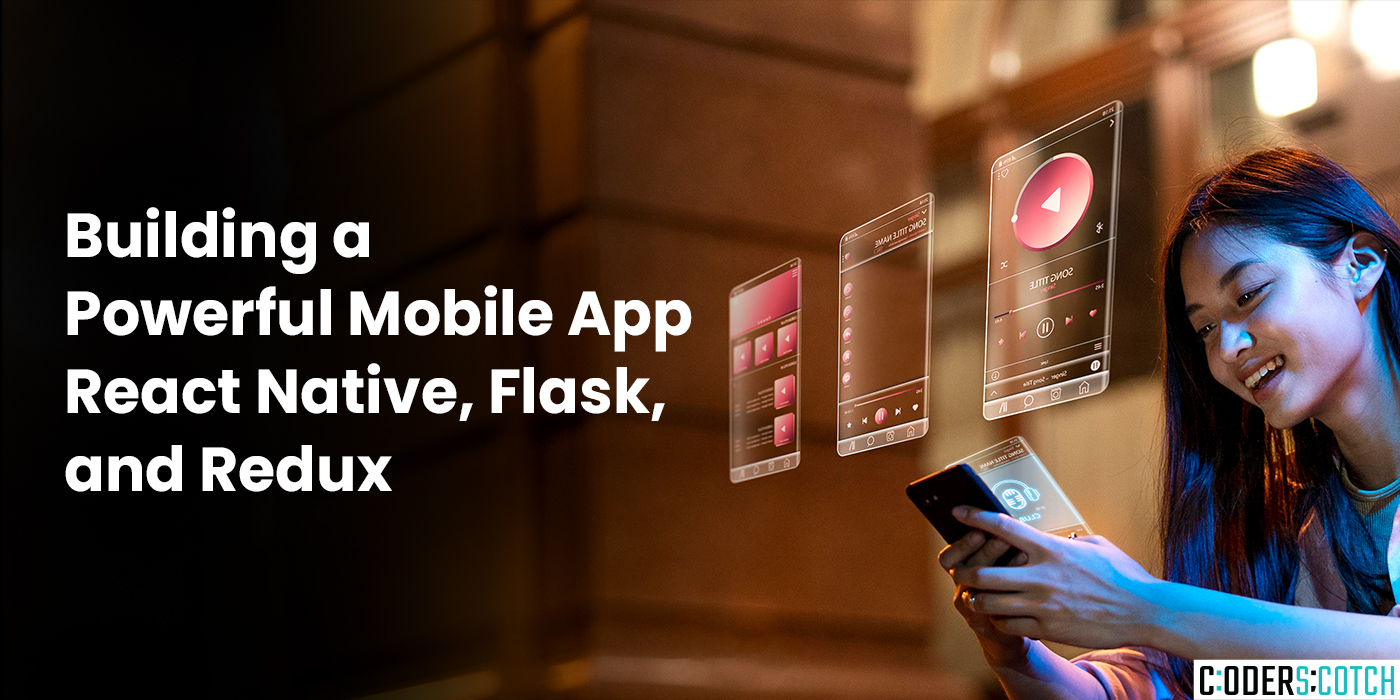Building a Powerful Mobile App: React Native, Flask, and Redux

Introduction:
React Native has become a preferred choice for building sleek and responsive mobile applications. But a great mobile app needs a robust backend to handle data and logic. This blog dives into creating a full-stack React Native app using Flask, a lightweight Python framework, and Redux, a state management library for React, to form a powerful trio.
Why This Combination?
- React Native: Offers a smooth development experience for building native-looking mobile apps using JavaScript and React.
- Flask: Provides a clean and flexible backend for handling API requests, database interactions, and application logic using Python.
- Redux: Ensures predictable state management in your React Native app, making it easier to handle complex data flows.
What We’ll Build (Example):
Imagine a to-do list app. Users can add, edit, and delete tasks. The React Native app displays the task list and allows user interaction. Flask handles task persistence (saving in a database) and exposes APIs for CRUD (Create, Read, Update, Delete) operations on tasks.
Setting Up the Project
- React Native App: Use
create-react-app or expo to create a new React Native project.
- Flask Backend: Set up a Python environment and install Flask using
pip install Flask.
- Redux Integration: Install Redux and React-Redux libraries in your React Native project using npm or yarn.
Building the Backend (Flask):
- Define API endpoints for managing tasks (CRUD operations).
- Use a database like SQLite or connect to a remote database (optional).
- Implement logic for handling user requests, database interactions, and returning appropriate responses.
Building the Frontend (React Native):
- Design screens for displaying the task list, adding new tasks, and editing existing ones.
- Use Redux to manage the application state, including the list of tasks.
- Fetch data from Flask APIs using libraries like
axios to populate the UI and handle user interactions.
- Update the Redux store with new or modified task data upon successful API requests.
Redux for State Management
Redux helps manage complex application state in React Native. Here’s a basic flow:
- Actions: Define actions that represent user interactions or events in your app.
- Reducers: Pure functions that take the current state and an action, returning a new state based on the action type and payload.
- Redux Store: A central store that holds the entire application state.
- Connecting Components: Connect your React components to the Redux store to access the state and dispatch actions to update it.
Communication Between Frontend and Backend
- Use HTTP requests (GET, POST, PUT, DELETE) from your React Native app to interact with Flask API endpoints.
- Flask handles these requests, performs necessary actions, and returns JSON responses containing data or success/failure messages.
Putting It All Together
- Develop components for the task list, add task form, and edit task screen.
- Connect these components to the Redux store to access task data and dispatch actions for CRUD operations.
- Implement functions to make API calls to Flask endpoints based on user actions (adding, editing, deleting tasks).
- Update the Redux store with fetched or modified data received from Flask API responses.
Benefits of This Approach
- Clear Separation of Concerns: React Native handles UI and user interactions, Flask handles backend logic and data persistence, and Redux manages application state.
- Scalability: The modular design allows for independent development and scaling of frontend and backend.
- Predictable State Management: Redux ensures a central source of truth for application state, simplifying development and debugging.
Conclusion
This combination of React Native, Flask, and Redux provides a robust and scalable architecture for building full-stack mobile applications. By leveraging the strengths of each framework, you can create efficient, maintainable, and feature-rich mobile apps that offer a great user experience.
